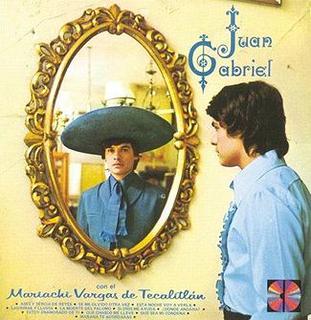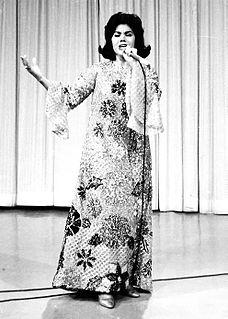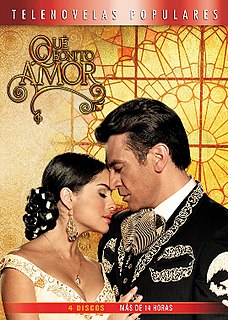
The music of Mexico is very diverse and features a wide range of musical genres and performance styles. It has been influenced by a variety of cultures, most notably the culture of the indigenous peoples of Mexico and Europe.
Ranchera, or canción ranchera is a genre of the traditional music of Mexico. It dates before the years of the Mexican Revolution. It later became closely associated with the mariachi groups which evolved in Jalisco. Ranchera today is also played by norteño or banda and Tamborazo. Drawing on rural traditional folk music, ranchera developed as a symbol of a new national consciousness in reaction to the aristocratic tastes of the period. Some well-known interpreters of the genre are the following singers: Amalia Mendoza, Antonio Aguilar, Chelo, Cuco Sánchez, Flor Silvestre, Irma Serrano, Javier Solís, Jorge Negrete, José Alfredo Jiménez, Lola Beltrán, Lucha Villa, Pedro Infante, Rocío Dúrcal, Vicente Fernández, and presently: Pedro Fernández and Pepe Aguilar.
María de Luz Flores Aceves, known by her stage name Lucha Reyes, was a Mexican singer and actress. Born in Guadalajara, Jalisco, she was popular in the 1930s and 1940s and has been called the "mother of ranchera music".
Rubén Fuentes is a Mexican classical violinist and composer, who is best known for his contributions to mariachi music.

Chapalatʃa'pala (help·info) is a town and municipality in the central Mexican state of Jalisco, located on the north shore of Lake Chapala, Mexico's largest freshwater lake. According to the 2015 census, its population is 50,738 for the municipality. The municipality includes about 10,000 in the town of Ajijic.

Tecalitlán is a city and municipality in the central Pacific coastal state of Jalisco, Mexico. Located just south of Ciudad Guzmán, its population was 13,265 per the 1990 census.
Nydia Rojas, is an American singer who performs in a wide range of musical styles such as jazz, soul, and R&B, but makes a particular specialty of Mexican folk music.

Plaza Garibaldi is located in historic downtown Mexico City, on Eje Central between historic Calle República de Honduras and Calle República de Peru, a few blocks north of the Palacio de Bellas Artes. The original name of this plaza was Plaza Santa Cecilia, but in 1920, at the conclusion of the Mexican Revolution, it was renamed in honor of Lt. Col. José Garibaldi, who joined with the Maderistas in the attack on Casas Grandes, Chihuahua, during the Revolution. The Garibaldi Metro station is named after this plaza.

Juan Gabriel Con El Mariachi Vargas De Tecalitlan is the fourth studio album by Mexican Singer–songwriter Juan Gabriel with music performed by the mariachi group Vargas de Tecalitlán. It was released in 1974. In 1975, Juan Gabriel made his film debut in Nobleza Ranchera alongside Mexican Superstar Verónica Castro. The songs on this album were featured in the film.

José Ángel Vargas Sánchez was a Mexican Luchador or professional wrestler best known under the ring name Angel Blanco. Vargas is the father-in-law of the first Ángel Blanco Jr. and the father of the current Ángel Blanco Jr. and Hijo del Ángel Blanco I and II, as well as the grandfather of Horus. Vargas made his professional wrestling debut in 1958 and worked for the majority of his career for the Mexican professional wrestling promotion Empresa Mexicana de Lucha Libre (EMLL). As Ángel Blanco he worked most of his career as an enmascarado, or masked wrestler until losing his mask to El Solitario 1972. Along with Dr. Wagner, Vargas formed one of the premier tag teams of the 1960s and 1970s called La Ola Blanca.

Guillermina Jiménez Chabolla, known by her stage name Flor Silvestre, is a Mexican singer, actress, and equestrienne. She is one of the most prominent and successful performers of Mexican and Latin American music, and is a star of classic Mexican films. Her more than 70-year career includes stage productions, radio programs, records, films, television programs, comics, and rodeo shows.

Enriqueta "Queta" Jiménez Chabolla, known by her stage name La Prieta Linda, is a Mexican singer and actress.
"¡Ay, Jalisco, no te rajes!" is a Mexican ranchera song composed by Manuel Esperón with lyrics by Ernesto Cortázar Sr. It was written in 1941 and featured in the 1941 Mexican film ¡Ay Jalisco, no te rajes!, after which it became an enormous hit in Mexico. The melody of the song was used for the title song of the Disney film The Three Caballeros. Both songs have been recorded by many artists.

Qué bonito amor is a 2012 Mexican telenovela produced by Salvador Mejía Alexandre for Televisa. It is based on La Hija del Mariachi, produced by Colombian's RCN Television and written by Mónica Agudelo in 2006-2007.

Flor Silvestre con el Mariachi México, vol. 2 is a studio album by Mexican singer Flor Silvestre, released in 1964 by Musart Records.

Flor Silvestre con el Mariachi México is a studio album by Mexican singer Flor Silvestre, released by Musart Records. It is Flor Silvestre's second Musart album and contains her 1961 version of "Cielo rojo", one of her signature songs.

It Happened in Mexico is a 1958 Mexican musical film directed by Ramón Pereda and starring María Antonieta Pons, Joaquín Cordero and Carmelita González.















